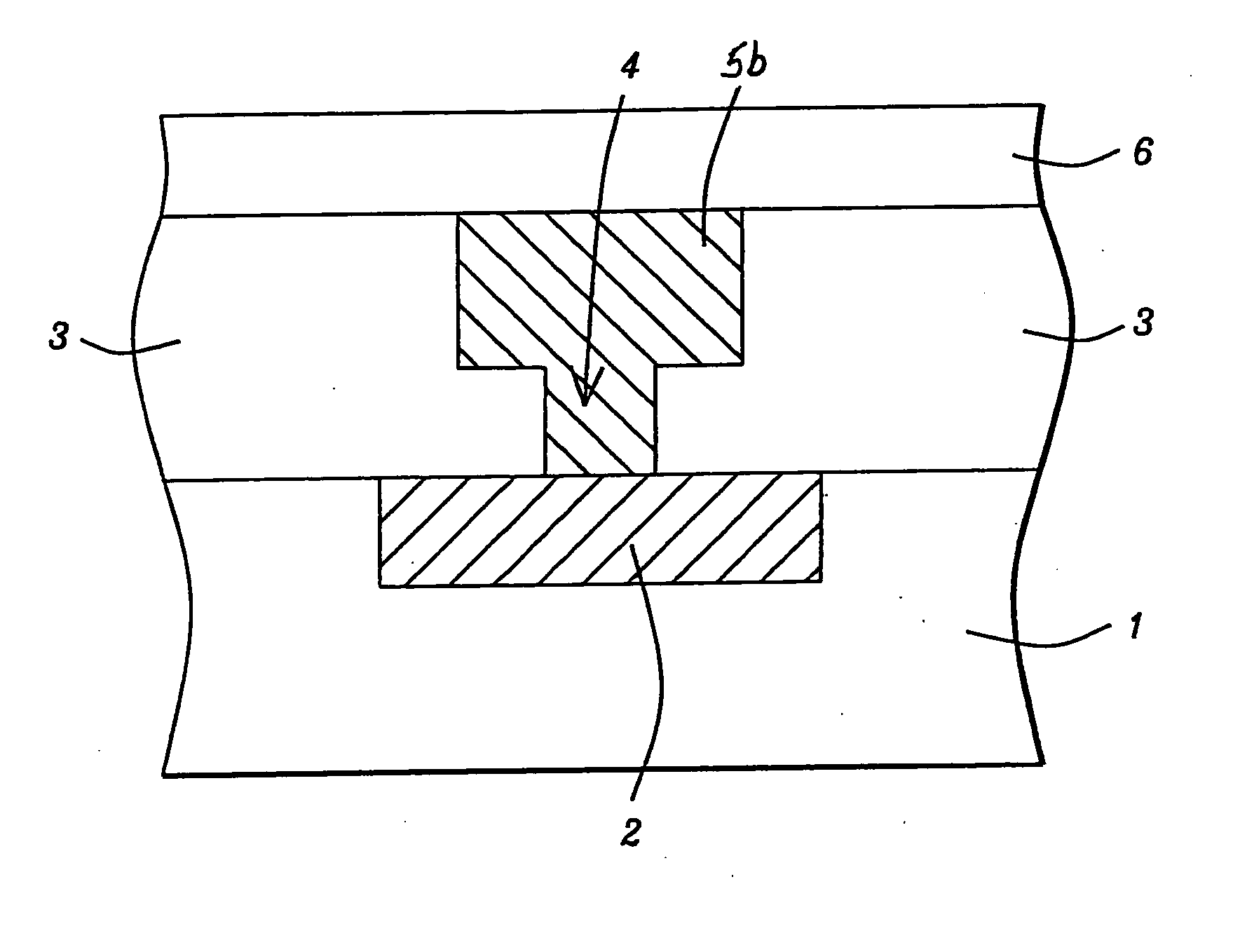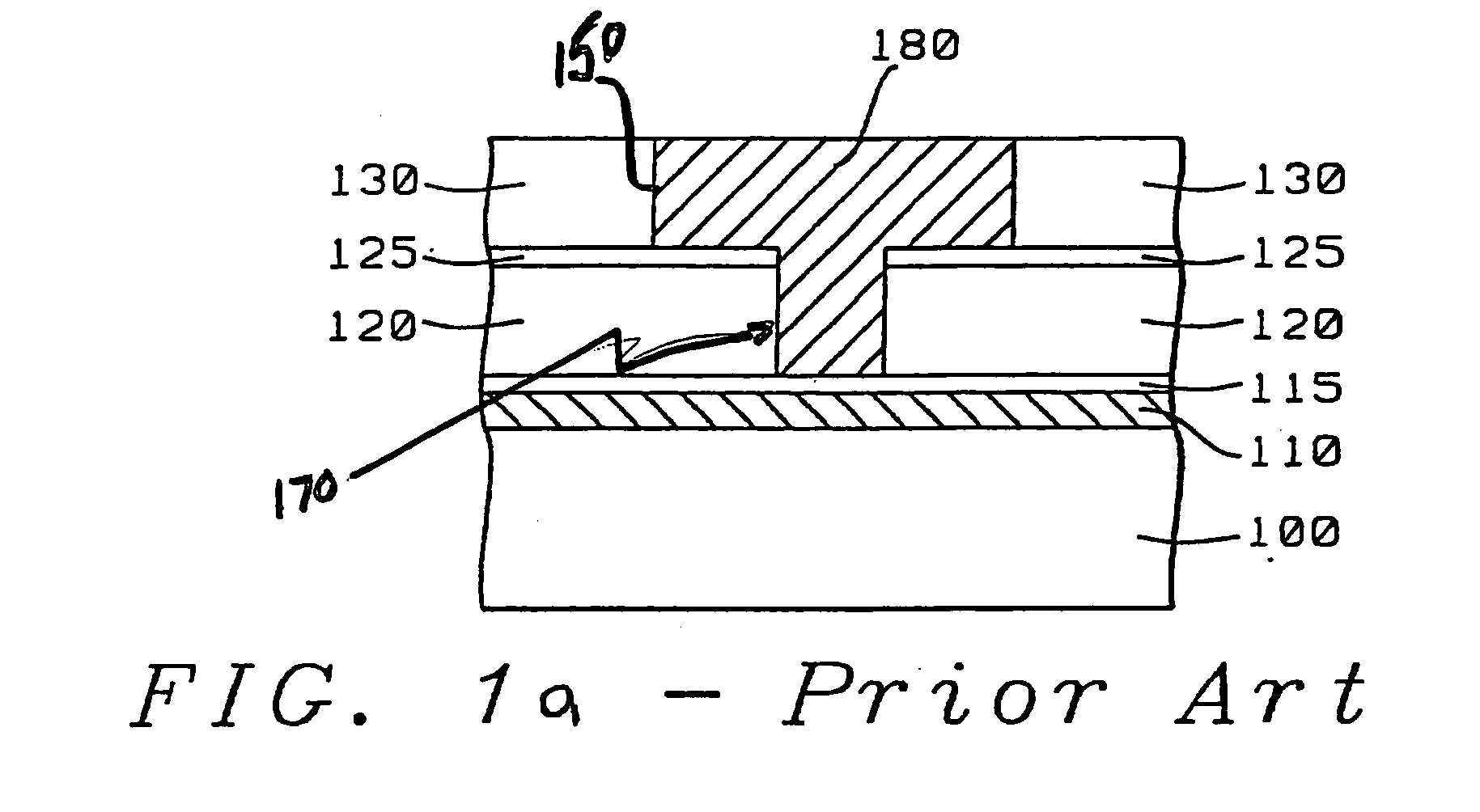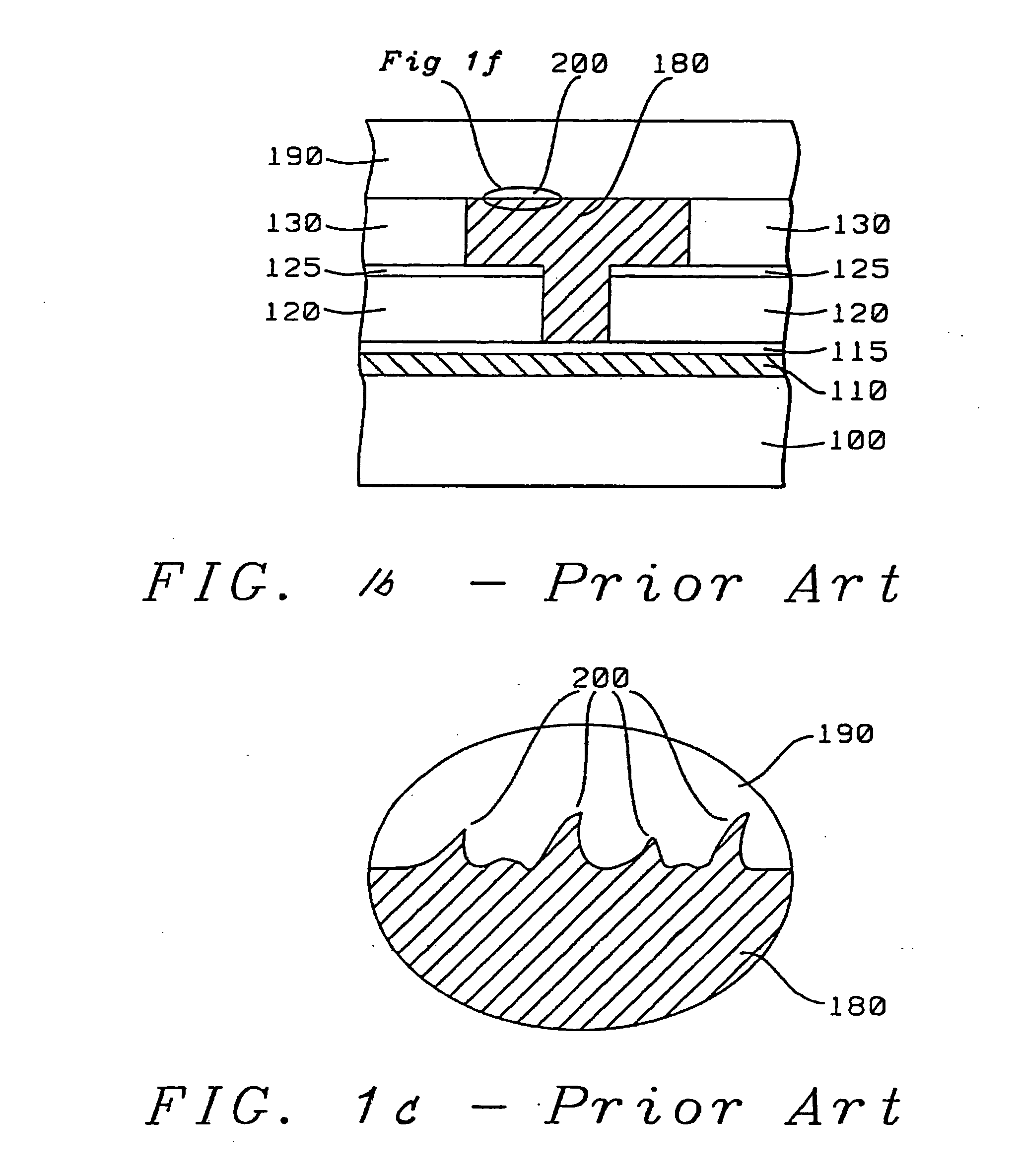Low temperature method for minimizing copper hillock defects
a technology of low temperature and defect, applied in the direction of semiconductor/solid-state device manufacturing, basic electric elements, electric apparatus, etc., can solve the problems of low rc interconnect delay, more difficult processing, and remained reliability problems, so as to prevent the formation of surface discontinuities
- Summary
- Abstract
- Description
- Claims
- Application Information
AI Technical Summary
Benefits of technology
Problems solved by technology
Method used
Image
Examples
Embodiment Construction
[0020] According to an embodiment of the present invention, disclosed herein is a low temperature process for inhibiting the formation of hillocks in copper semiconductor structures when the structures are exposed to the temperatures involved in semiconductor processing.
[0021] As shown in FIG. 2, a substrate 1 is provided with a conductive layer 2, and an upper insulating layer 3. Substrate 1 can be any appropriate semiconductor subtrate such as monocrystalline silicon, or alternatively it could be an insulator such as silicon dioxide, borosilicate glass (BSG), borophosphosilicate glass (BPSG) or the like. Conductive layer 2 can be copper, aluminum or tungsten, while upper insulating layer 3 can be any suitable passivation material as are known in the art, such as silicon dioxide, BSG, BPSG, etc.. Upper insulating layer 3 can be deposited using a technique such as CVD.
[0022] An opening 4 is then formed in the upper insulating layer 3 using, for example, a dual damascene technique ...
PUM
| Property | Measurement | Unit |
|---|---|---|
| temperature | aaaaa | aaaaa |
| temperature | aaaaa | aaaaa |
| temperature | aaaaa | aaaaa |
Abstract
Description
Claims
Application Information
 Login to View More
Login to View More - R&D
- Intellectual Property
- Life Sciences
- Materials
- Tech Scout
- Unparalleled Data Quality
- Higher Quality Content
- 60% Fewer Hallucinations
Browse by: Latest US Patents, China's latest patents, Technical Efficacy Thesaurus, Application Domain, Technology Topic, Popular Technical Reports.
© 2025 PatSnap. All rights reserved.Legal|Privacy policy|Modern Slavery Act Transparency Statement|Sitemap|About US| Contact US: help@patsnap.com



